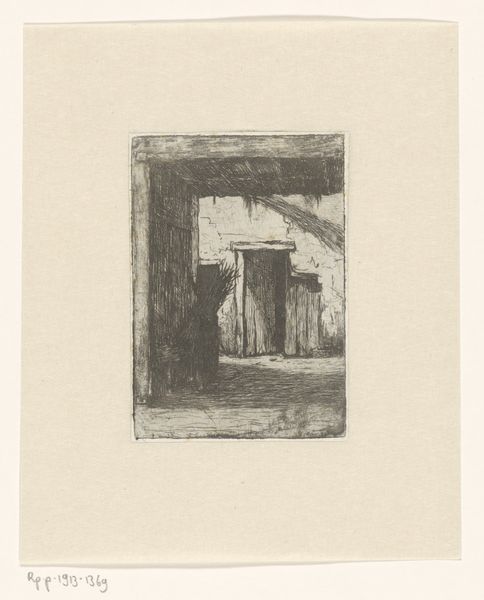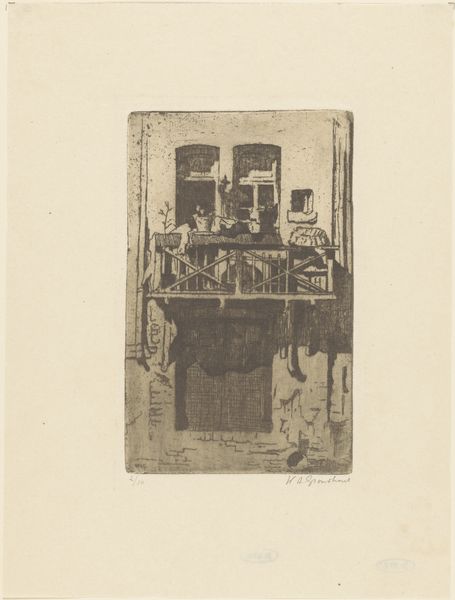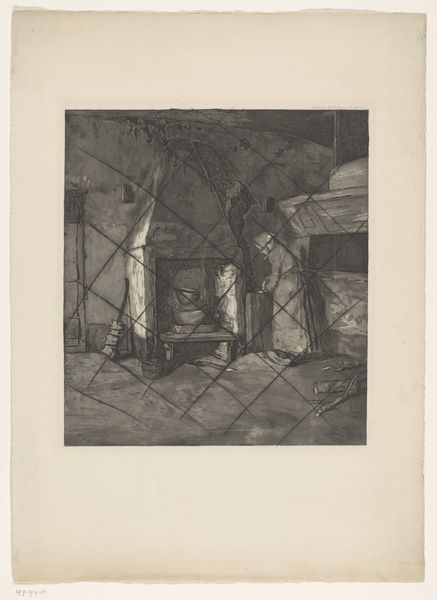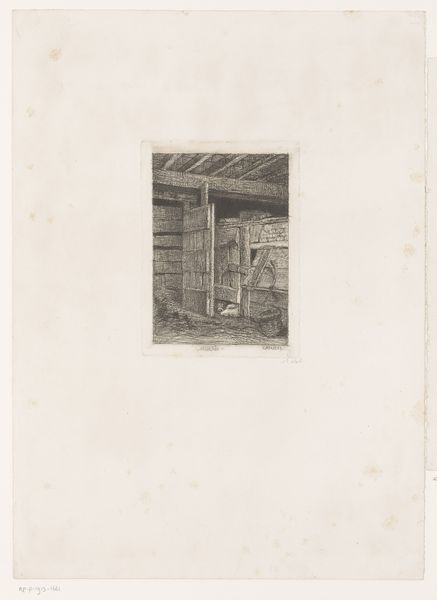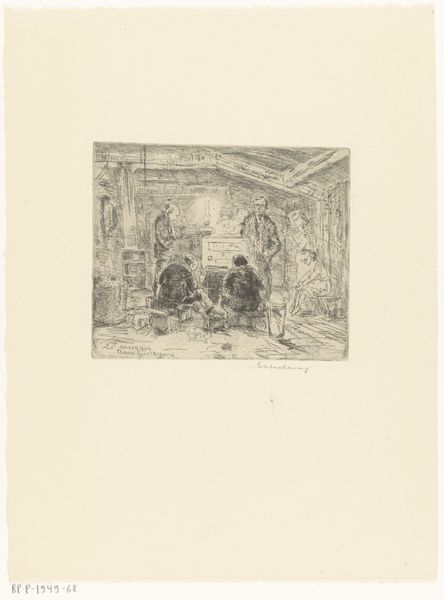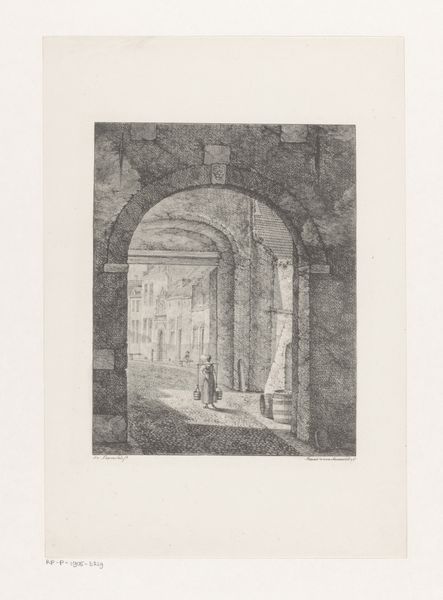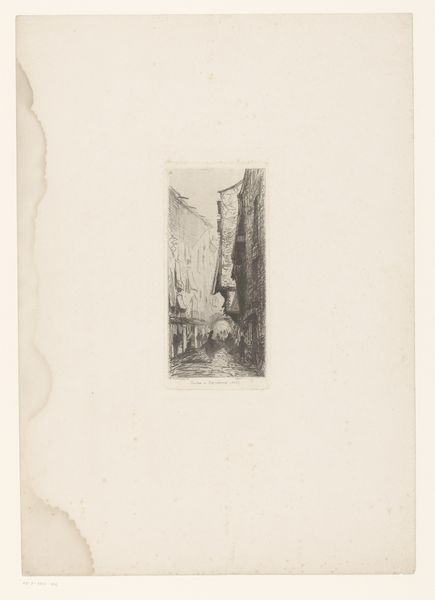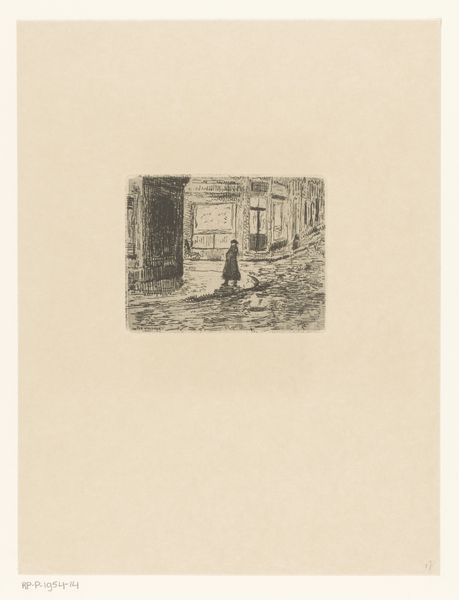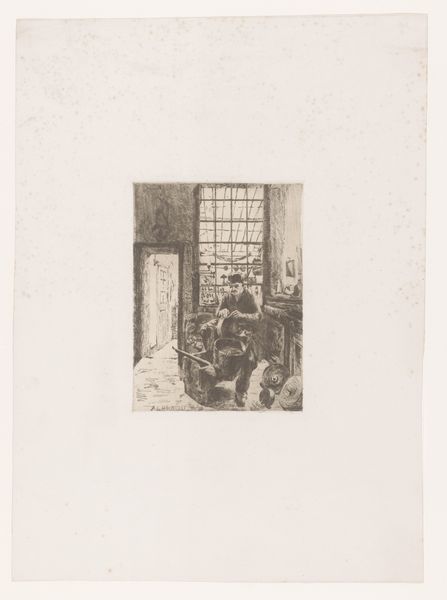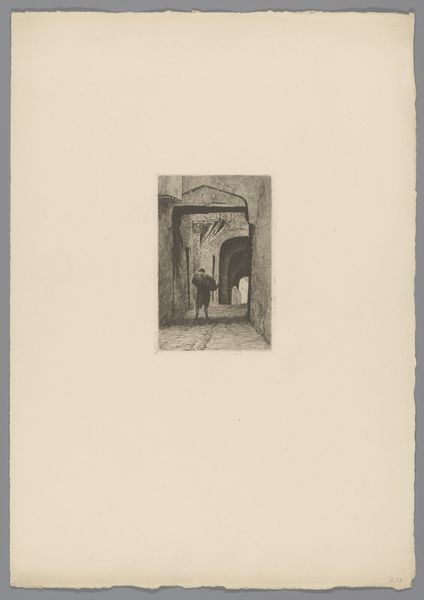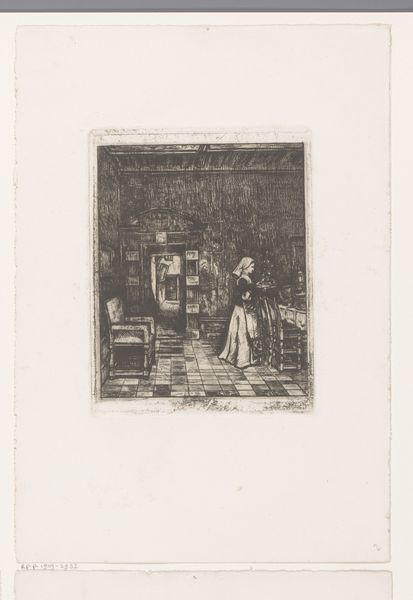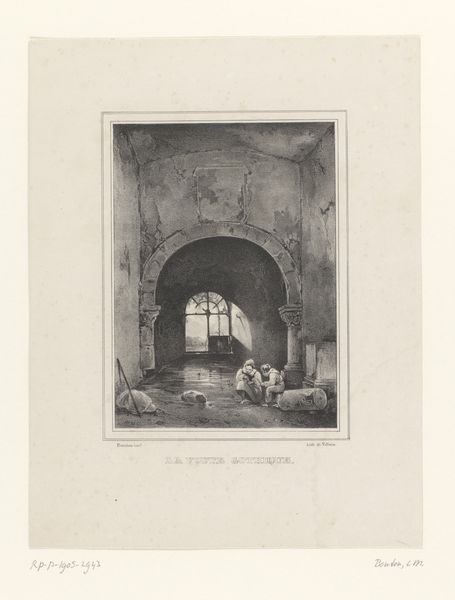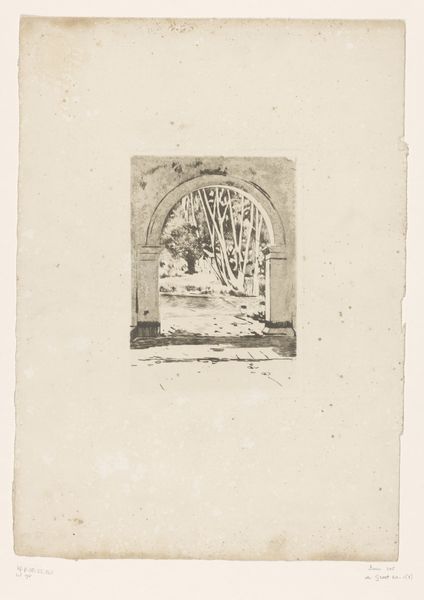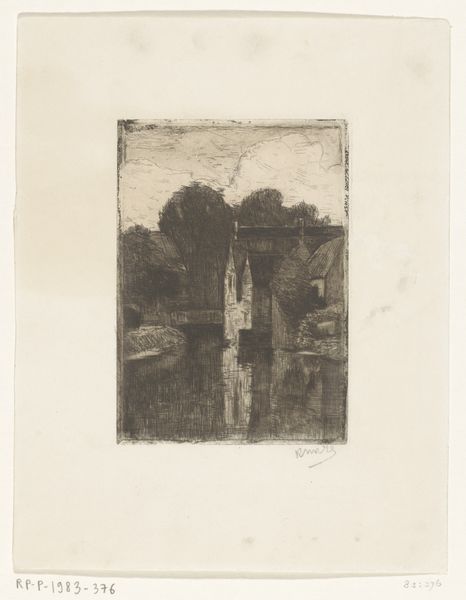
Dimensions: height 256 mm, width 200 mm
Copyright: Rijks Museum: Open Domain
Editor: Here we have Martin Hardie’s 1907 etching, "Ingang van het Victoria and Albert Museum in Londen", currently held at the Rijksmuseum. It's quite a shadowy scene, isn't it? What strikes you most about this print? Curator: The skeletal scaffolding dominating the entrance is what commands my attention. We see the museum not as a static monument of high culture, but as an active site of production. Think of the labour and materials involved in maintaining such a grand structure. Editor: That's fascinating, I hadn't considered it that way. It really deconstructs the romantic idea of a museum. Curator: Exactly! Consider the etcher's own labour here. The lines etched into the plate, the paper itself – these are material products, evidence of a specific process tied to industrial advancements in printing. What kind of consumption was it designed to feed, do you think? Editor: Perhaps the consumption of art itself, making it more widely available? Like a precursor to mass media images? Curator: Precisely. It begs the question: does this reproduction cheapen the 'aura' of the museum, or does it democratize access? The answer probably sits somewhere in the middle. Consider the implications of widespread circulation, blurring lines between fine art and everyday experience. Editor: It makes me wonder about the original context, and how different people would have viewed this image then. Curator: A crucial point. The social context is key to unpacking its meaning and value. How its materiality contributes to both artistic expression and its societal influence. Editor: I've definitely gained a new perspective on this seemingly simple etching! Thinking about labor, materials, and how those aspects interact with the broader cultural landscape opens up many interesting avenues of investigation.
Comments
No comments
Be the first to comment and join the conversation on the ultimate creative platform.
